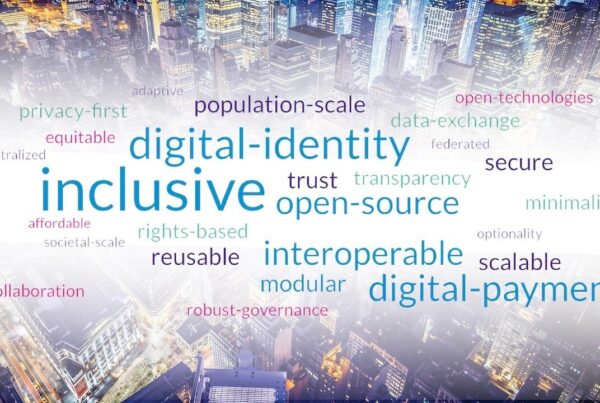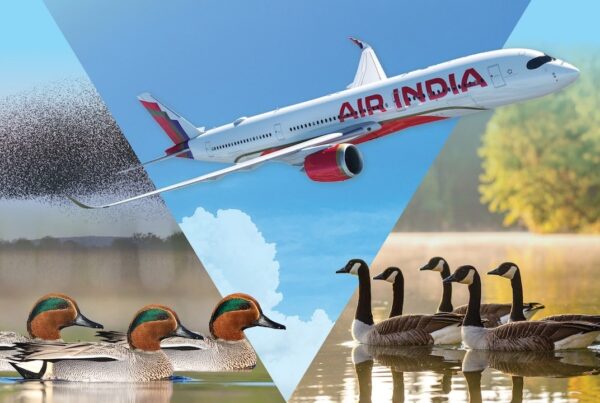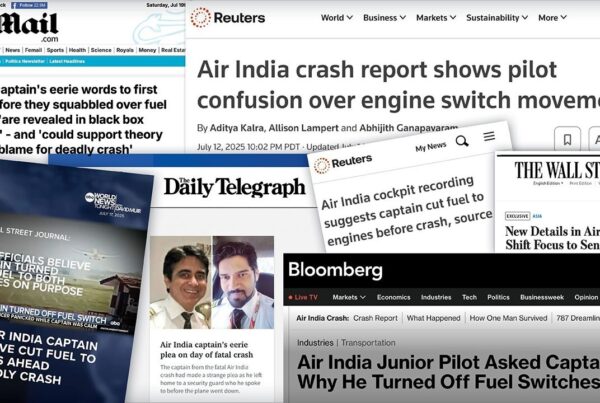
Data storage on computers used to be expensive. To optimize for space, computer programmers routinely used two digits to represent a year. Dates were commonly used in financial applications and other applications and devices that managed schedules, or were activated on a periodic basis. As the year 2000 approached, programmers realized that applications and devices would interpret 00 as the year 1900 instead of 2000 with potentially catastrophic consequences.
Fixing the problem was easy but required manually scanning millions of lines of code. In 1998, President Clinton appointed a Y2K Czar to oversee Y2K preparations. The estimate for not fixing the problem was several trillion dollars. The cost of fixing the problem was estimated to be about 100 billion dollars. The money was available, the manpower was not. With companies and governments scrambling to avert potential catastrophes, it was Indian IT companies that they turned to for help. They had the needed people – young, tech-savvy, English-speaking, and willing to do the tedious and unglamorous work.
Apart from a few reported Y2K glitches, the world sailed through into the new millennium with a collective sigh of relief. Oak Ridge National Laboratory’s Y-12 nuclear weapons plant reported a malfunction caused by the Y2K bug that affected a ‘mission-critical’ computer. The bug was fixed in a few hours. A video rental store in Albany, New York charged a customer a late fee of $91,250 for returning a video, a hundred years late. Other than a few similar hiccups, the technological Armageddon and the predicted market crash did not come to pass. The markets did crash later in the year, but that was attributed to inflated dotcom valuations and irrational exuberance.
Y2K firmly established India as a reliable global provider of IT services. In the two decades since, India has transformed itself into a leader in the digital economy. The digital economy which was close to negligible at the turn of the century is expected to contribute over 20% to India’s GDP by 2026.
The Digital Economy
Indian IT companies have come a long way from their Y2K growth days. The pace of digitalization in India was the fastest among major economies in the last decade. From a provider of custom IT services, India is transforming itself into a digital economy.
The Digital India Stack has been the key enabler of the digital economy. It has patched leaks in delivering welfare benefits, brought millions into the formal economy, empowered citizens, propelled small businesses, and promoted social and financial equity. The foundational start for the Digital India Stack was provided by a biometric digital ID called Aadhaar (meaning foundation in Hindi). About 1.4 billion Aadhaar IDs have been issued, providing the digital identity and authentication service for the Digital India Stack.
Connecting Aadhaar with a bank account enabled Direct Benefits Transfers (DBT), which facilitated social welfare payments directly into a beneficiary’s account. According to the government, cutting out intermediaries and fake/duplicate beneficiaries has saved over $27 billion. Connecting the Aadhaar with a mobile phone, allowed beneficiaries to be notified as soon as the money was in their accounts. Connecting Aadhaar, bank accounts, and mobile phones enabled the second layer of the stack, the Universal Payments Interface (UPI), where money could now be sent not just from the government to the people, but people to people, and people to businesses.
UPI, unlike credit or debit cards, enables transactions without requiring powered terminals or a private secure network. Sellers display a QR code and buyers use their mobile phones to transact and transfer money. Half a billion people have been brought into the formal economy through UPI. In 2022, UPI processed 89.5 billion digital transactions, which accounted for 46% of global real-time digital payments. Today, over 10 billion UPI digital payment transactions are processed every month with a gross transaction value of over $200 billion.
The foundational layers of the Digital India Stack helped answer the two fundamental questions that are needed to access any service – “Are you who you say you are?” and “Are you authorized for this service?” Before Aadhaar, the complexity of verifying identity made it costly to deliver services, and basic services like banking were unavailable to most. The Digital India Stack provided real-time tools to verify identity, authenticate, authorize, and transact. The cost of verifying identity went down from around $12 to 6 cents, catalyzing financial inclusion, advancing social equity, and enabling portability of services.
During the COVID-19 lockdowns, migrant workers did not have access to the subsidized food grains that they were entitled to. Ration cards were managed by states and benefits were not portable across States. Connecting Aadhaar with the Ration Card allowed for authorization of benefits anywhere in India giving “One Nation, One Ration.” Migrant laborers can now access benefits wherever they are using Aadhaar biometric authentication.
Connecting Aadhaar with vehicle registration enabled FASTag. FASTag, an RFID-based toll payment solution that uses UPI has reduced wait times at toll booths, increased yearly toll revenues to over $5 billion and saved over $8 billion in wasted fuel expenses. The modular structure of the Digital Stack has allowed FASTag to be used as a payment option at parking lots, shopping malls, and for national park entry anywhere in India.
There is no denying that the Digital India Stack has been a spectacular success. Digital inclusion has removed barriers for many and banking and other services are available to most today. While digital access barriers have gone down, data barriers remain. The lack of aggregated banking and credit histories has created a situation where the poor pay far higher interest rates than the rich. Fragmented data in healthcare has inflated medical costs and is responsible for over-testing, over-prescription, and polypharmacy. Mobility solutions within and across cities are provided by a patchwork of services, and supply chains for order fulfillment are still siloed.
Scoring credit histories, portability of patient records, and unbundling order fulfillment involve data exchange agreements across multiple parties. A frictionless experience requires data barriers to be broken down, and for parties to agree and communicate using a standard data taxonomy and dictionary.
Beckn Protocol
The Beckn protocol is a data exchange initiative of the Digital India Stack aimed at breaking data barriers to facilitate seamless data sharing between market participants. The Account Aggregator (AA) and Open Credit Enablement Network (OCEN) framework will open banking data to facilitate data interchange between regulated financial entities. The AA and OCEN data frameworks will make lending and wealth management a lot faster, cheaper, secure, and consent-based. The Ayushman Bharat Digital Mission (ABDM) is creating a health facility registry and making health records portable. The Open Network for Digital Commerce (ONDC) is creating a level playing field for small merchants by unbundling the supply chains for order fulfillment. Underlying all of these is the Beckn protocol – an open API and data exchange specification.
Consider the data structure to represent the opening hours for a business. Whether it is a retail store on ONDC or a medical clinic on ABDM, ‘opening hours’ is an attribute that is common to both. For a facility that is open 24 hours 7 days a week, the opening hours can be represented as “always open”, “24/7”, or “Mo-Su 00:00-24:00”. While all communicate the same information, the last structure is the only one that is extensible to represent all combinations of open and close times. The data provider, the data controller, and the customer application that presents the information will typically be different entities. Having a shared data language across all entities allows data to be converted into information that is locale and language specific.

Opening hours in English and French. Standard representations allow applications to switch languages and locales.
Standardizing the structure of attributes is a start. The ONDC platform connects buyers with sellers. Discovering a product or service requires seller registries. Sellers provide catalogs of products and services. The Beckn data exchange protocol ensures that the buyers, sellers, logistics providers, payment and credit providers, and reverse logistics providers for customer returns can seamlessly discover, engage, and transact.
Similarly, ABDM is the digital backbone of a national health infrastructure and connects patients, healthcare providers, and payers. Healthcare provider registries allow healthcare providers to be discovered. Every healthcare provider provides catalogs of healthcare products and services. The Beckn data exchange protocol will eliminate data fragmentation, create better health outcomes, significantly reduce healthcare costs, and allow people to access health services anywhere in the country giving “One Nation, One Health.” It will also significantly reduce IT costs for healthcare providers, avoid liability for patient records, and eliminate computer security risks and ransomware attacks.

Beckn Protocol is a data exchange specification that will enable smart services
The data exchange will also allow for population-level datasets to be de-identified and made available for shared research. The availability of these large tokenized datasets will give data analytics, ML, and AI workloads the data volumes necessary to avoid bias, the ability to replicate results independently, and for health science companies to accelerate the development of life-saving drugs and treatments. The most transformative changes happen when we have the right data.
Digital Public Infrastructure
India has demonstrated that the proper use of digital technologies can become a force multiplier in its decades-long fight against poverty and improve the ease of living for its citizens. When digital access becomes inclusive and widely accessible and data barriers are broken, it will bring socio-economic transformation and put countries on a path towards achieving UN Sustainable Development Goals (SDG).
The annual SDG funding gap is estimated at $4.2 trillion. The SDG funding gap overlooks the improved efficiency and significant savings from the digital transformation of government services. India’s digital transformation has been a game changer for economic development and moved hundreds of millions into the formal economy. The Digital India Stack is being open-sourced and made available as Digital Public Infrastructure (DPI). Digital services built on these foundational layers can significantly lower costs for delivering basic services, increase financial inclusion, and ensure social equity.
Most countries of the Global South are data poor. This data drought impedes policymaking, reduces community resilience, and affects the ability of governments to quickly address natural disasters like floods, droughts, epidemics, and other manifestations of climate change. The lack of good data also inhibits the deployment of new disruptive technologies like cloud computing, ML, and AI, which can fuel significant economic growth.
Data poverty can also be viewed as a greenfield opportunity. It does not have the burden of legacy systems and legacy data. Data in legacy systems is rarely easily accessible, and must be cleansed and transformed before it can be used and activated. Extracting, transforming, and activating data is expensive, and without the required skills and expertise can be extremely time-consuming.
The Metraa (Measure Impact/Track Progress/Reform Model/Accelerate Success/Achieve Targets) Framework leverages open data, digital transformation, DPI, and sustainable models of service delivery. The Metraa framework will provide transparency into progress towards goals and an accelerated path towards achieving them. Foreign aid has driven most Global South countries into either dependency or debt. The Metraa framework will foster collaborations and partnerships, boost local entrepreneurship, and put countries on a path toward sustainable resilience and social equity.
Read more about the Metraa Framework at Achieving SDGs – An Actionable Framework.
During the COVID-19 pandemic, many countries made emergency payments to their most vulnerable citizens. Using Aadhaar-seeded DBT, India disbursed payments to over 300 million beneficiaries in less than two weeks. The Indian government saved billions of dollars by plugging leakages in the earlier manual cash-based benefits system, removing fake/duplicate beneficiaries, and significantly reducing the cost of the transaction.
In comparison, during the COVID-19 pandemic, the US distributed over $900 billion in payments under the Unemployment Insurance (UI) program and over $1.3 trillion under the Paycheck Protection Program (PPP). The US Government Accountability Office (US GAO) reported that the total amount of fraud across all UI programs during the COVID-19 pandemic was between $100 billion and $135 billion. The potential fraud in the PPP program was reported to be around $200 billion. It is not just the Global South, even the US could potentially save trillions of dollars by building a national digital infrastructure.
Read more on how the US can save trillions of dollars on healthcare and how India can deliver affordable and universal healthcare at 3% of GDP by using DPI in our three part series on healthcare.
From IT Services to Digital Infrastructure
Most Unix-based computer systems in the world use January 1, 1970 as the epoch time. Standard C-programming libraries used a 32-bit signed integer to represent the number of seconds since the epoch time. The maximum integer that can be represented in a 32-bit signed integer is 2³¹-1. This maximum will be reached on January 19 2038 when the integer will overflow and switch the date to 13 December 1901.
Like Y2K, before the year 2038, the code for any custom IT solutions will have to be scanned for Y2K38 bugs. Building solutions on open-source DPI will future-proof your applications. Y2K established India as a reliable provider of custom IT services. DPI will establish India as a reliable partner for national digital infrastructure and population-scale digital services.
DPI will significantly lower the cost of verifying identity, patch leaks in welfare programs, advance social equity, make governments much more agile in managing emergencies, and boost global economic growth. DPI will be the force multiplier in fighting poverty. It will leapfrog development, address the socio-economic gap, and accelerate the achievement of SDGs.
When data is open and accessible, digital access becomes inclusive, and data barriers fall, it will create resilient communities, improve the ease of living for citizens, create profitable businesses, and sustainably grow the economy.
Credits
* Header image uses photo by Venti Views on Unsplash
Hawkai Data provides a Customer eXperience Platform (CXP) to quickly prototype, operationalize, and scale applications and services. Start your digital transformation today and create new business and customer experiences using Hawkai Data CXP.
If you have any questions, talk to us at info@hawkai.net, or follow us on LinkedIn at https://www.linkedin.com/company/hawkai-data/, or connect with us at https://hawkai.net.








